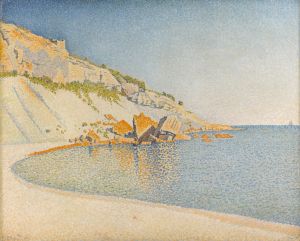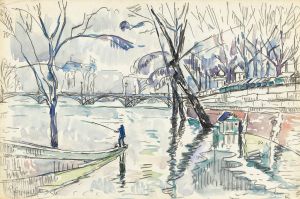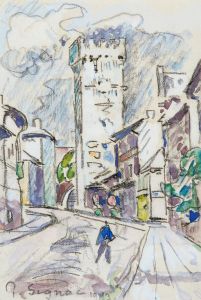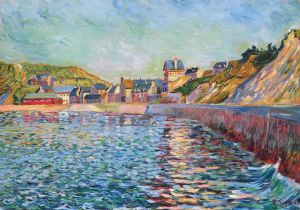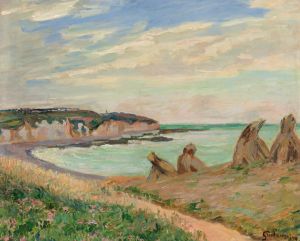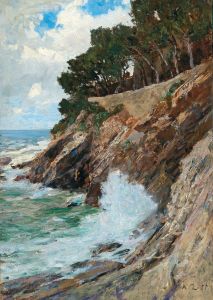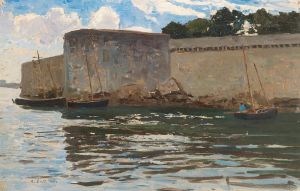
Concarneau, calme du matin
A hand-painted replica of Paul Signac’s masterpiece Concarneau, calme du matin, meticulously crafted by professional artists to capture the true essence of the original. Each piece is created with museum-quality canvas and rare mineral pigments, carefully painted by experienced artists with delicate brushstrokes and rich, layered colors to perfectly recreate the texture of the original artwork. Unlike machine-printed reproductions, this hand-painted version brings the painting to life, infused with the artist’s emotions and skill in every stroke. Whether for personal collection or home decoration, it instantly elevates the artistic atmosphere of any space.
"Concarneau, calme du matin" is a painting by the French artist Paul Signac, created in 1891. Signac was a prominent figure in the Neo-Impressionist movement, which was characterized by the use of pointillism, a technique involving the application of small, distinct dots of color to form an image. This painting exemplifies Signac's mastery of this technique and his dedication to capturing the effects of light and color.
The painting depicts a serene morning scene in the coastal town of Concarneau, located in Brittany, France. Concarneau was a popular destination for artists during the late 19th century due to its picturesque landscapes and vibrant maritime life. Signac visited Concarneau several times, and the town's tranquil harbor and bustling fishing activities provided ample inspiration for his work.
In "Concarneau, calme du matin," Signac captures the calmness of the morning with a meticulous arrangement of color dots. The composition features a view of the harbor with boats gently floating on the water, their reflections creating a shimmering effect. The sky is painted in soft hues of blue and pink, suggesting the early morning light. The use of pointillism allows Signac to create a luminous and harmonious scene, emphasizing the peaceful atmosphere of the morning.
Signac's approach to painting was heavily influenced by the scientific theories of color and perception developed by Michel Eugène Chevreul and Ogden Rood. These theories posited that colors could be more vibrant and harmonious when placed in close proximity to their complementary colors. By applying these principles, Signac was able to achieve a greater sense of depth and luminosity in his work.
"Concarneau, calme du matin" is also notable for its composition and structure. The painting is carefully balanced, with the boats and their reflections creating a rhythmic pattern across the canvas. The use of horizontal and vertical lines adds to the sense of stability and calmness in the scene. Signac's attention to detail and his ability to convey the subtleties of light and color make this painting a significant example of Neo-Impressionist art.
Paul Signac was a key figure in the development of Neo-Impressionism, and his work had a profound influence on subsequent generations of artists. He was a close associate of Georges Seurat, the founder of the movement, and together they developed the techniques and theories that defined Neo-Impressionism. Signac's dedication to the principles of pointillism and his innovative use of color and composition helped to establish the movement as a major force in the art world.
"Concarneau, calme du matin" is held in high regard within the art community and is considered one of Signac's masterpieces. It is housed in the Musée d'Orsay in Paris, where it continues to be admired by visitors from around the world. The painting remains a testament to Signac's skill and his contribution to the evolution of modern art.





